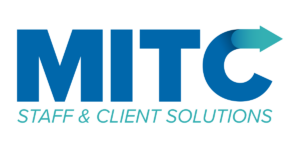Agencies Speak Out on Scheduling
With restricted funding, labor shortages, and state and federal mandates continuing to pressure providers, human service agencies need to use their limited human and financial resources as efficiently as possible.
Ineffective employee scheduling directly impacts labor costs, productivity, and an agency’s ability to operate within budget. Effective scheduling solutions improve manager productivity and enable managers to make more informed scheduling solutions, while eliminating the inefficiencies inherent to a paper scheduling system.
In this article, agencies across the United States share their experiences using an automated time and attendance solution, how they implement optimal scheduling practices, and the benefits of effective scheduling.
An effective automated scheduling solution can improve efficiency and organization at an agency. Community Living Connections is a non-profit agency founded in 2004. With 300 staff providing community supported living services to approximately 200 individuals in Wisconsin, CLC supports individuals to live in their own homes and participate in community life, providing in-home staff to help with planning, personal cares, medical support, finances, relationship building, and more.
The Senior Scheduling Manager at Community Living Connections, Stephanie Stringer, has seen improvements since automating scheduling practices, “It is liberating to have schedules accessible, accurate, and up-to-date. Employees can check schedules from anywhere, which makes it easy.”
The benefits have been numerous, “I know how important it is for our systems to run well and be up-to-date. CLC can really have flawless transitions between shifts. This helps the employee be less anxious. Employees have said it’s a huge relief to know that they aren’t going to have to work late. Those comments usually come from people who previously worked at another agency or remember how it used to be here prior to MITC with unreliable schedules. Even my boss thinks that MITC and centralized scheduling have given so much consistency and reliability to the function of the agency.”
Developmental Services of Dickinson County is another agency that uses MITC. Developmental Services supports over 300 adults and children in a variety of home and community-based service settings in central Tennessee. The agency employs over 280 staff working in eight counties with an annual operating budget in excess of $9.0 million. The agency manages 3 day programs, 30 smaller group homes with 2 beds, and a home and community-based service program.
Barbara Brandon, Team Manager, and Amber Donegan, Payroll & Benefits Coordinator, have improved scheduling practices at Developmental Services. Prior to using MITC, “Managers maintained schedules in excel. Whoever was on call had to flip through pages and pages of schedules and employee information that may or may not have been updated to find people to cover shifts. MITC gives managers more opportunity to see what’s actually going on. We have a weekend supervisor who covers on call shifts. Working with accurate schedules saves a lot of time. We have cut down on wasting time with phone calls and avoid calling people to cover a shift who are already working.”
Centralized Scheduling
Some agencies perform scheduling in a centralized manner, with a dedicated individual or department put in charge of all scheduling concerns. For example, Community Living Connections has a scheduling department overseen by Stephanie Stringer. “In our scheduling department, we have 3 people. I supervise and direct a Scheduling Manager and a Scheduler under me. We roll out schedules 2 months in advance for all employees. Supervisors are each in charge of a certain number of locations, and are ultimately responsible for shifts that aren’t filled at their locations. We meet twice a week with the three teams of supervisors to discuss scheduling and open shifts. I talk with teams monthly at their individual team meetings as well.”
“Overall, centralized scheduling is really a relief and tool that frees people up to do other aspects of their job. We ask employees and other staff not to do certain functions in MITC to allow the scheduling department to be responsible for most updates. This works better for us because too many hands being involved increases the chances of mistakes. I find our department needs to micromanage to a certain extent just to make sure no one makes a mistake that we are unable to track. Some might see it as obstructionist, but it prevents mistakes that would be even more cumbersome to correct,” according to Stephanie with Community Living Connections.
Implementation
Gateway Services started in 1970 in an abandoned schoolhouse in Malden, Illinois, with a crew of three, one program, and $34,000. Today, Gateway has grown to support 10 programs, 2 main locations with day programs, 6 group homes, home-based supports, and a transportation program. During its long history, Gateway Services has had to implement many changes. One of the latest was to implement a new workforce management, payroll, and financial system.
“Our accounting assistant maintains the staff schedules. The schedules are used to ensure everyone has only 40 hours scheduled. This allows us to produce the early overtime warning report. This report gives us the opportunity to minimize overtime. The benefit of putting in the schedules is we can cut staff hours to reduce overtime where we can,” according to Mandi Johnson, CFO with Gateway Services.
Mandi believes Gateway is still working toward the ideal scheduling system. “We didn’t force management to do things,” she says. “In my opinion, schedules should be set up 4-6 weeks in advance with adjustments made as needed. We have one program that won’t do that. They start from scratch every 2 weeks. If we’d have said, “you’re going to do it this way and that’s it” things would have been smoother.”
Time Savings
Developmental Services of Dickson County gained time to focus on other tasks after implementing a scheduling solution. “Using scheduling with MITC makes your life a whole lot easier, especially when you have a lot of employees on the payroll side. I’ve been able to do a lot more accounting work that I didn’t get to do before. I can’t imagine the headache without MITC. MITC is a huge timesaver overall to everyone in administration.”
According to Stephanie Stringer, “When I first joined CLC, 50-60% of calls to the eCell manager were scheduling questions from employees! We found that our paper copies of schedules posted in the houses were inaccurate or not up-to-date. Once we started training and getting staff used to looking online for themselves, calls to the on-call phone were greatly reduced. Keeping schedules accurate and verifying assigned shifts has been much easier. The number of calls pertaining to scheduling are rarely an issue. On-call scheduling questions are seldom brought up as a problem in our bi-weekly meetings.”
“Developmental Services has definitely saved time on the approving of payroll. We have better control of what employees are actually doing as compared to schedules.”
MITC scheduling offers additional features to improve agencies’ operations.
“We use MITC availability selection criteria to help fill open positions. MITC allows CLC to screen or filter for available employees. All of our managers have access. We use MITC scheduling daily,” says Stephanie Stringer.
Self Service
With MITC, agencies have the option to give employees access to schedules. Stephanie Stringer shared that, “Community Living Connections allows employees to view their timesheets and make edit requests. Employees can view and request PTO through their calendar. Employees cannot edit their own information or restrictions.”
Most employees are able to benefit from self-service. “There are a handful of folks who struggle with self-service. It is largely because they are in a certain age range or lacking tech savvy. A good 90% of staff understands how to use MITC and use self-service,” according to Stephanie Stringer with CLC.
Developmental Services also gives employees access to self-service. “Employees use self-service, and the employees that I’ve talked to like having the access to it. Since we’ve started doing scheduling on the web as well, they can see schedules.” Additionally, the agency has 10 clients working for it, and they use client timesheets.
Overtime Reductions
Gateway Services has experienced reductions in overtime since implementing a time & attendance and scheduling solution from MITC. Mandi Johnson, CFO shared that, “Three years ago, overall overtime was 23%. Now it’s down to 5.77%. In the CILA program it is now 11.23%, down from 36% due to using scheduling and early overtime reports. At first, I ran reports and would give mangers notes about which employees were in danger of going over. They would look at schedules and adjust them as necessary to prevent overtime. Now, managers are on the web checking daily reports themselves.”
Scheduling can definitely help agencies reduce overtime. However, the nationwide staffing shortage has made many agencies reconsider their ability to focus on overtime reductions.
According to Stephanie Stringer, “In certain households, when there is a good pool of staff, CLC would be able to control the flow of overtime. It’s a great idea, but with our staffing shortage, reducing overtime isn’t a priority. We are happy to contain it! We’ve weighed whether it’s ok to go with the overtime, decided it is, and we build a percent into the budget to pay for it.”
Barbara and Amber with Developmental Services are in the same position. The agency is down about 30 people, so it has not seen any overtime reductions yet. However, they say: “Overtime might have been higher than what it is today without scheduling. It is helpful to see at a glance how many hours employees are scheduled for to make sure the agency isn’t giving any one employee more overtime than anyone else.”
Ease of Use
There are benefits of an MITC Solution that Stephanie at Community Living Connections had not experienced previously. “I was in a similar role at a different agency doing the same type of work prior to coming to CLC. In that job, all schedules were Excel spreadsheets. I was responsible for having 25 schedules up-to-date and ensuring they were understandable. After starting this job at CLC, I thought “if I’d have had MITC, I never would have left the other job, and it would have been so much better. I have worked with other scheduling systems. We get some mixed reviews from managers. Scheduling can be the scapegoat, and be blamed as the reason people are frustrated.”
She continues, “I prefer just a few people working with schedules as opposed to every single manager. Their real function as a manager is the advocacy and care of clients and the supervision of staff. Managers take these jobs because they want to work with people, certainly not to spend their time on scheduling.”


 2018 MITC
2018 MITC
Leave a Reply
Want to join the discussion?Feel free to contribute!